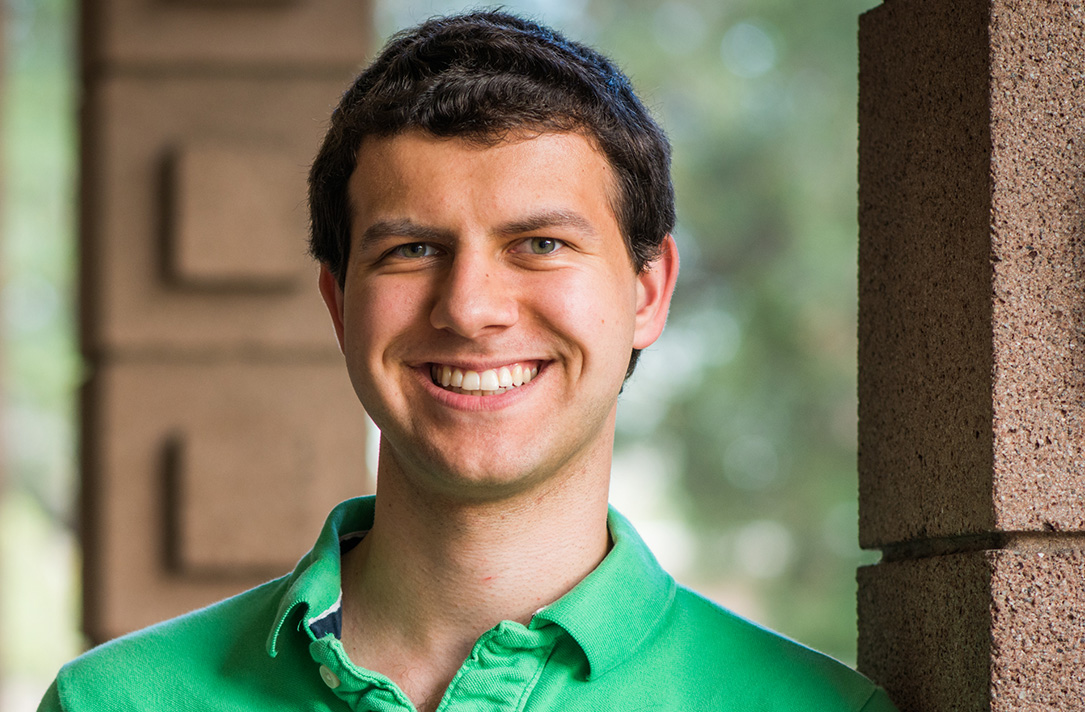Harvey Mudd Student Creates First App for the Colorblind
October 19, 2015
Sometimes inventions come about when people seek to solve a problem they are experiencing. Such was the case for Vincent Fiorentini ’16, who created the Color Blind Pal app.
The app has been downloaded some 12,000 times. Fiorentini also has received Facebook messages from strangers all over the world who are using it.
Fiorentini, who is red-green colorblind, was diagnosed with color blindness at age 7 when a teacher noticed he was using a green crayon for his skin color in a self-portrait. To him, the color red looks quite dark—almost black. Over the years, he’s taught himself what colors common objects like fire hydrants and stoplights are, and he says that functionality can be almost as good as having full color vision. But, he decided that an app might make things better.
Through Harvey Mudd’s hands-on curriculum as well as work experience (Fiorentini recently interned at Facebook), Fiorentini developed strong technical skills that helped him create the Color Blind Pal. He guesses he worked roughly 100 hours writing code to develop each of the two versions of the app, the first of which, for Macs, was released on Aug. 5, and the second of which, for iOS devices such as iPhone, iPad, and iPod Touch, was released on Sept. 15. He plans to release it on Android next.
“Accessibility was really important to me,” he says. “I figured I could hone in on my own experience as a colorblind person to figure out what features I’d need to hopefully help other colorblind people.”
First and foremost, the app needed to be able to determine what color something was. “There are certain shades that colorblind people can distinguish just fine—so the trick is to translate the full spectrum to a shorter spectrum. I came up with some simple mapping where you take the full range of colors and squish it down to half of the range of colors. The basic idea of the shift is taking all the colors in the input image and then, for any one of those colors, replacing it with a different color half as far along the spectrum,” says Fiorentini.
This process brings what the colorblind person is seeing closer to what a non-colorblind person would see. Though the colorblind person still isn’t seeing the exact color, he or she is now able to distinguish it from black.
Color Blind Pal has three basic modes. The first is color inspector, in which it delivers to its user descriptive information about the particular color, including the hue, saturation and value (or lightness) of the image that the user has captured on his or her device’s screen. The second is a mode that corrects for color blindness, in which a filter running at the bottom of the screen shifts colors so the user can distinguish colors better and more accurately. And the third is a simulation experience, or the “empathy mode,” as Fiorentini has dubbed it, in which the user can see the world as a colorblind person would.
Color Blind Pal has an extra function, or “stripe mode,” in which the user can see the original color of an image, but also get information about its hue. “An example is if I can distinguish orange, red and purple, and I can distinguish blue, green and yellow, but I can’t distinguish orange/red/purple from blue/green/yellow. If I set the app to draw stripes on orange/red/purple and I see a striped pattern over a color that looks like red or green, I’ll know it has to be red. I’ve found this helpful when looking at maps with a lot of color labels,” Fiorentini says.
He credits the computer science and writing classes he’s taken at Harvey Mudd with showing him how to architect an app and present it with clarity and succinctness. “A lot of the changes I made from the computer application to the all-purpose phone app were informed by thinking about someone who’s not a computer science 20-year-old.”
Fiorentini briefly considered charging for the app, but, inspired by Harvey Mudd’s mission statement, decided to keep it free forever. Applying his technical skills to effect a positive impact on society, he says, just seemed like the right thing to do.
